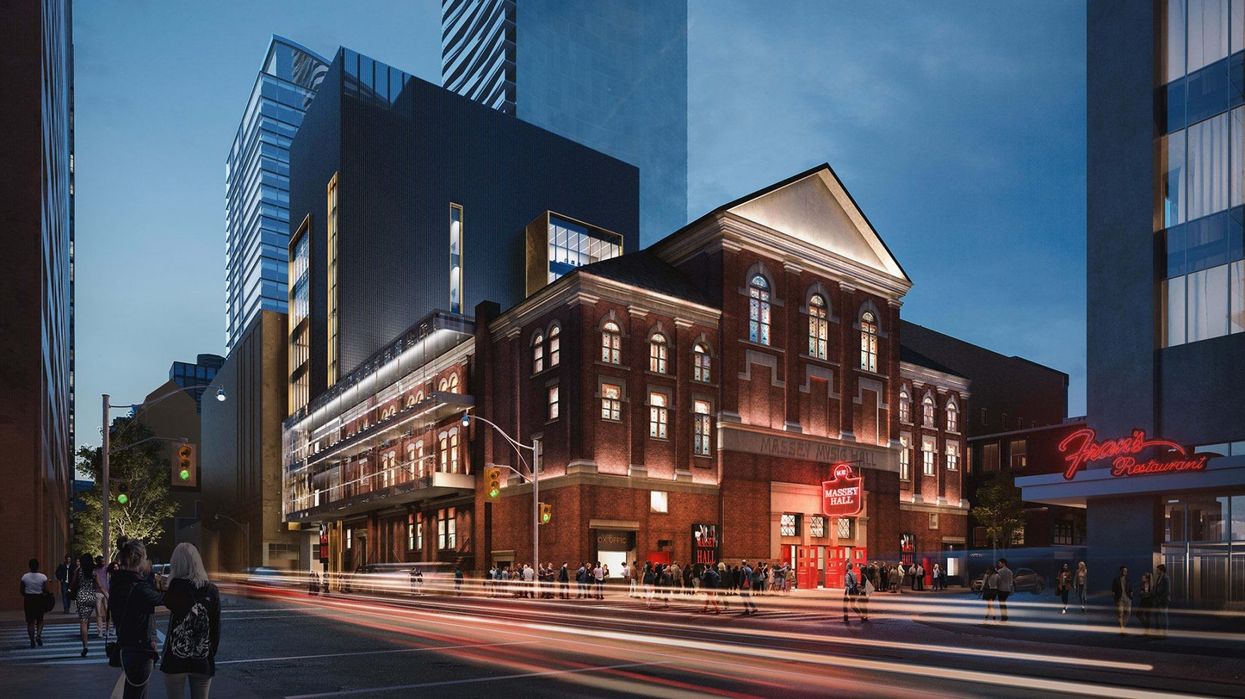
In 1890, a symbolic cornerstone was set on Shuter Street, by Charles Vincent Massey, grandson of industrialist Hart Massey. The elder Massey granted the city $100,000 to build a grand, new concert hall to honour the death of his son Charles.
READ: Massey Hall Artists Sing The Praises Of Toronto’s Beloved Venue
Planned by architect Sidney Badgley, Massey Hall eventually would cost $152,390.75. Take note, this was back in a time when a six-bedroom house in the Annex would set you back $1,200.
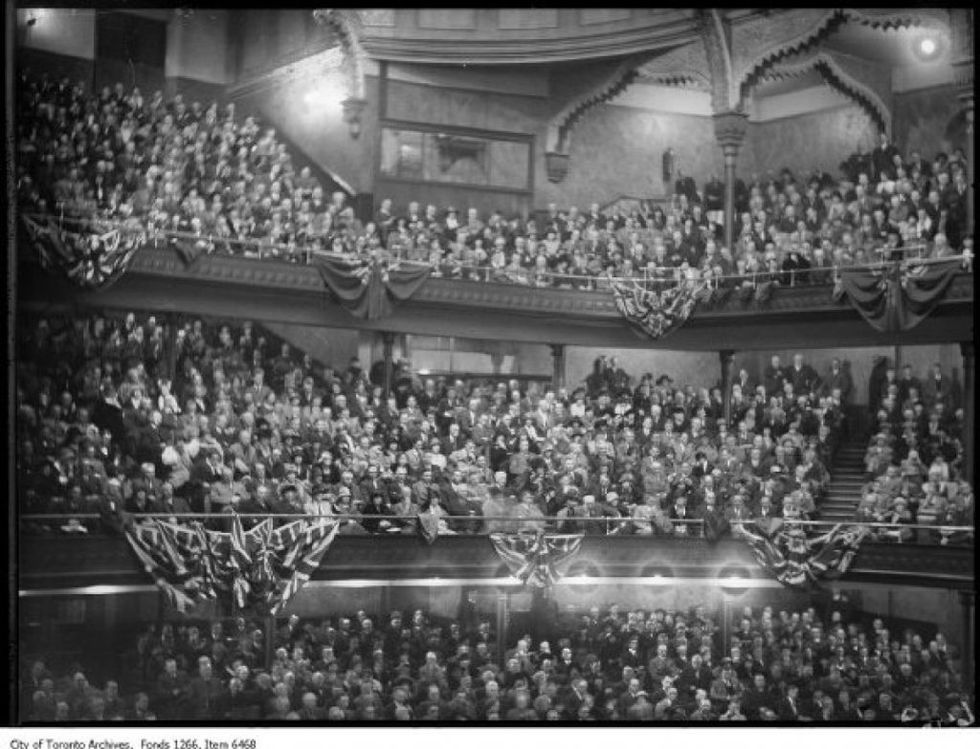
Massey Hall was designed with a neoclassical façade, with over a 100 stained-glass windows adorning its exterior.
As legend goes, Hart Massey's 12-year-old daughter Lillian wrote out Massey Music Hall on a piece of paper and gave it to her father. He then handed it to the stone carvers, who then carved the lettering above the main door.
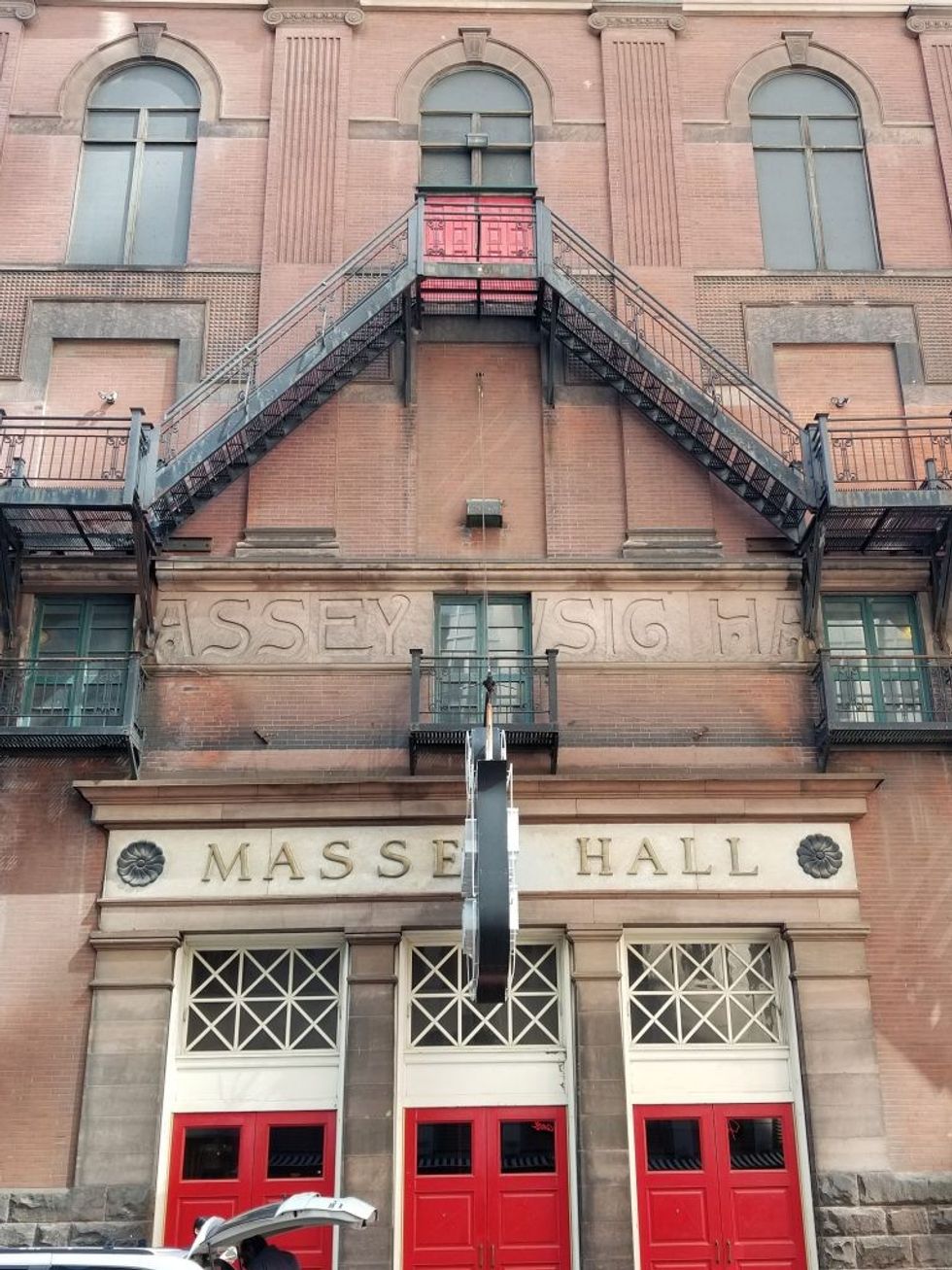
This lettering is still evident today. Some letters, however, were covered up when the exterior fire escape was installed later on.
The main concert hall interior has fantastic Moorish arches, spanning the width of the auditorium. Those were inspired by the Alhambra Palace in Spain and became all the rage in architectural design.
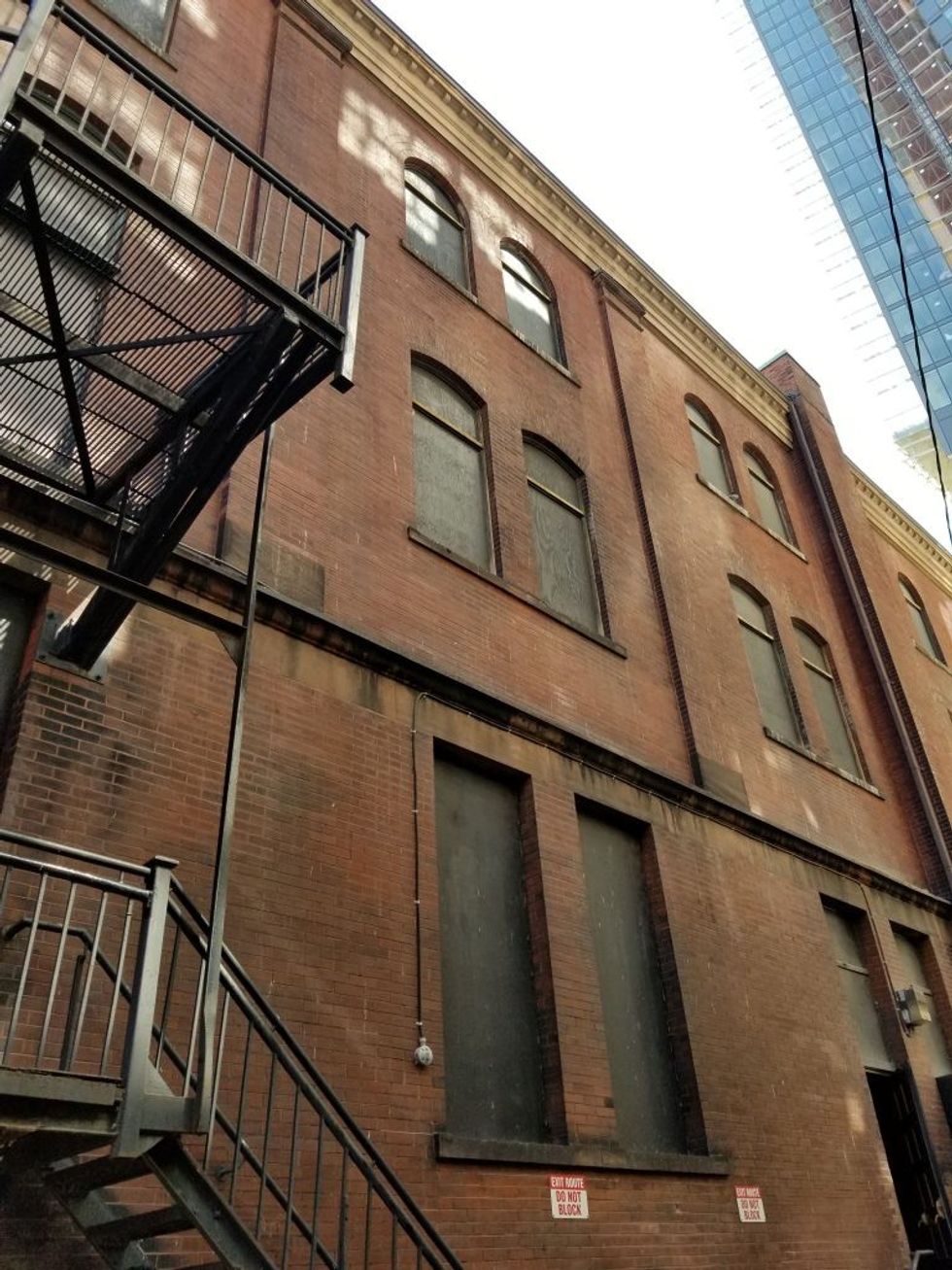
In 1894, the 3,500 seat Massey Hall opened with a performance of Handel’s Messiah. Over the next 124 years, Massey Hall would be the focal point of great music making.
READ: How 2018 Toronto Real Estate Is Eerily Similar To What It Was in 1890
In the beginning, mind you, it was one performer who would put Massey Hall on the map as one of the world's greatest concert halls, the most famous tenor of his generation Enrico Caruso.
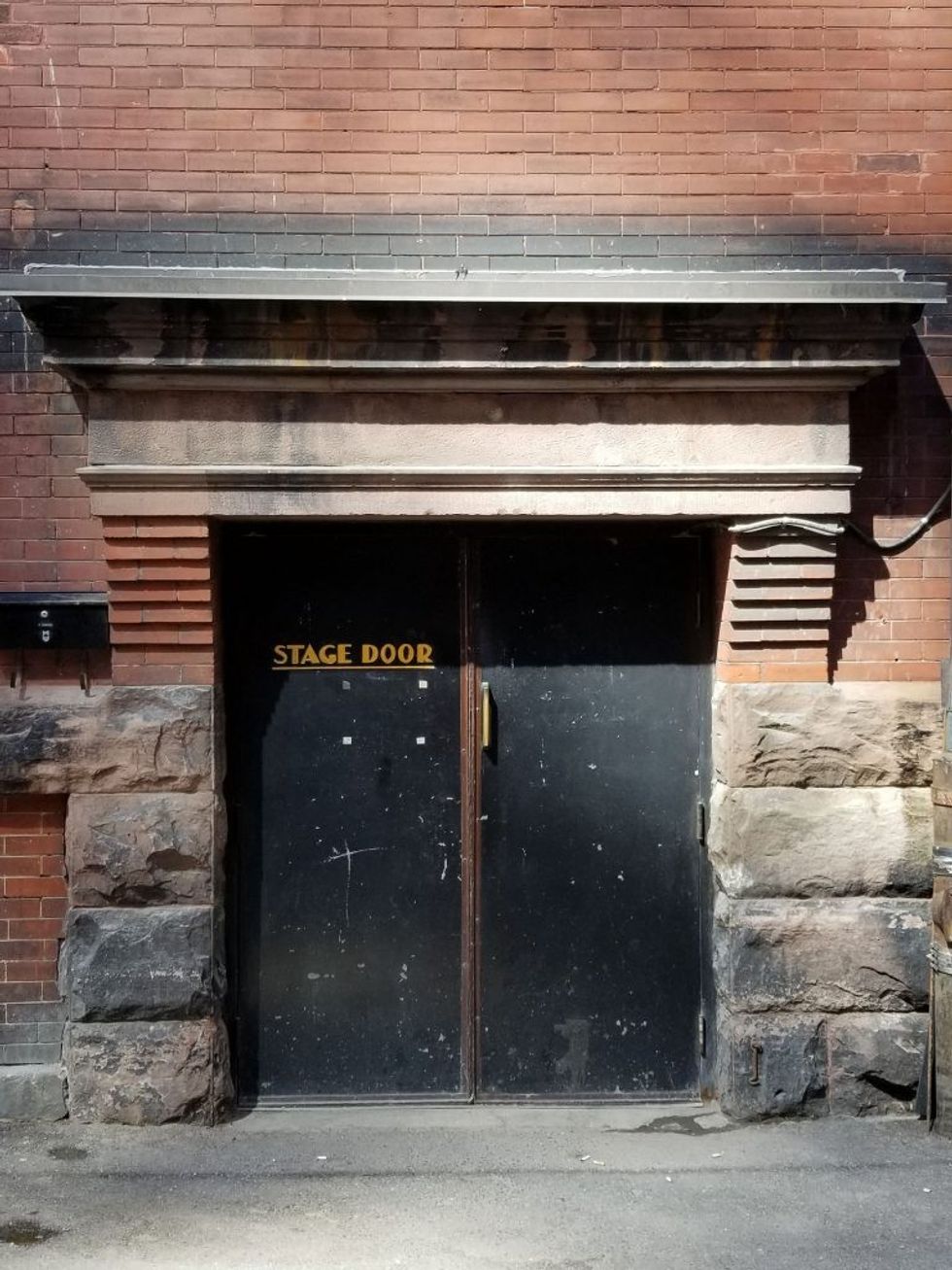
Caruso played the Hall twice, 1908 and 1920. By then, Massey Hall had quickly earned a reputation as an auditorium with outstanding acoustics.
Not everyone could afford a ticket.
So following his full concert, Caruso went out onto the fire escape to sing for the crowd. Anyone who could not get or afford a ticket would gather on Shuter Street.
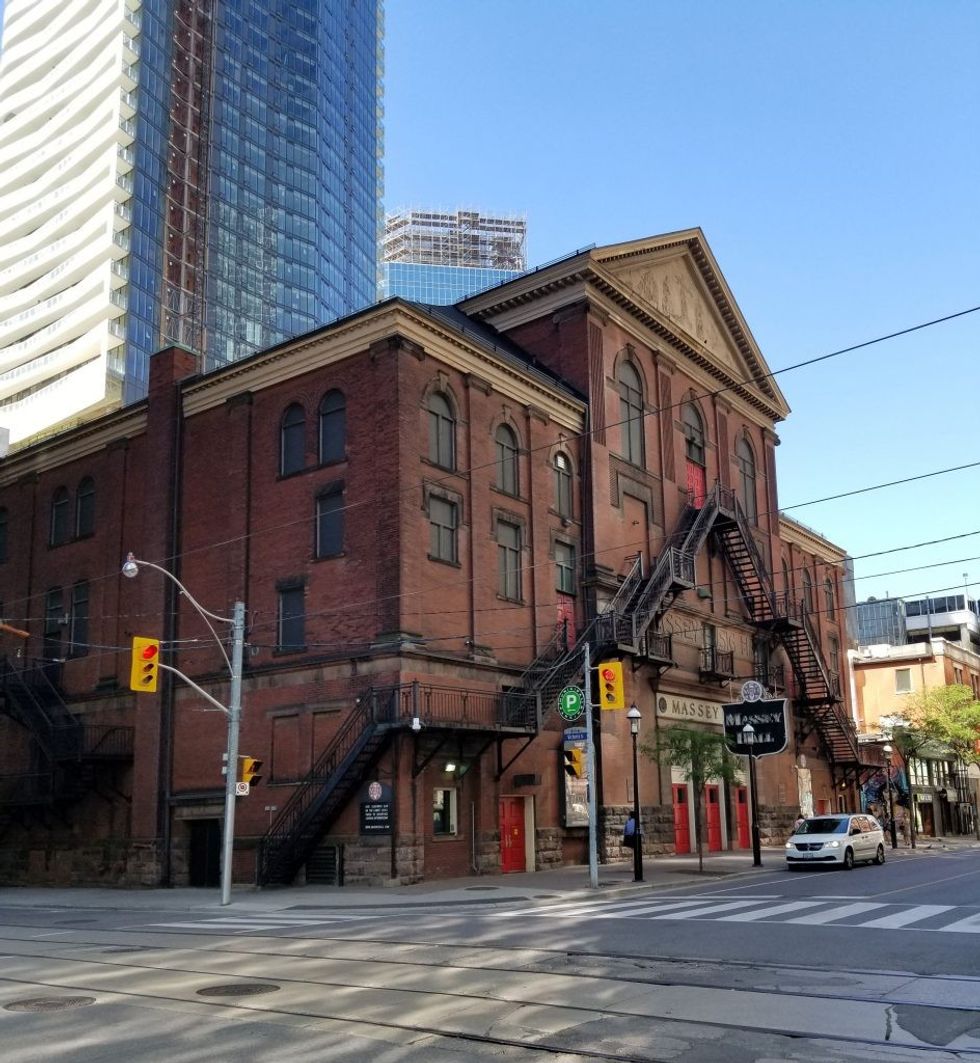
In 1967, a 29-year-old Gordon Lightfoot began a series of annual concerts that eventually would be record-breaking: the most solo appearances at the Hall by any performer.
His performances were also a defining signature of Massey Hall.
Gordon Lightfoot, now 79, was given the honour of being the last performer to play the legendary hall on July 1, 2018. That was the final show before the 124-year-old venue closed for two years of renovations.
Plans revealed for the renovation of Massey Hall not only show new offices and a larger backstage area for performers, but also include a pair of exterior glass walkways that embrace the sides of the hall improving access for all.
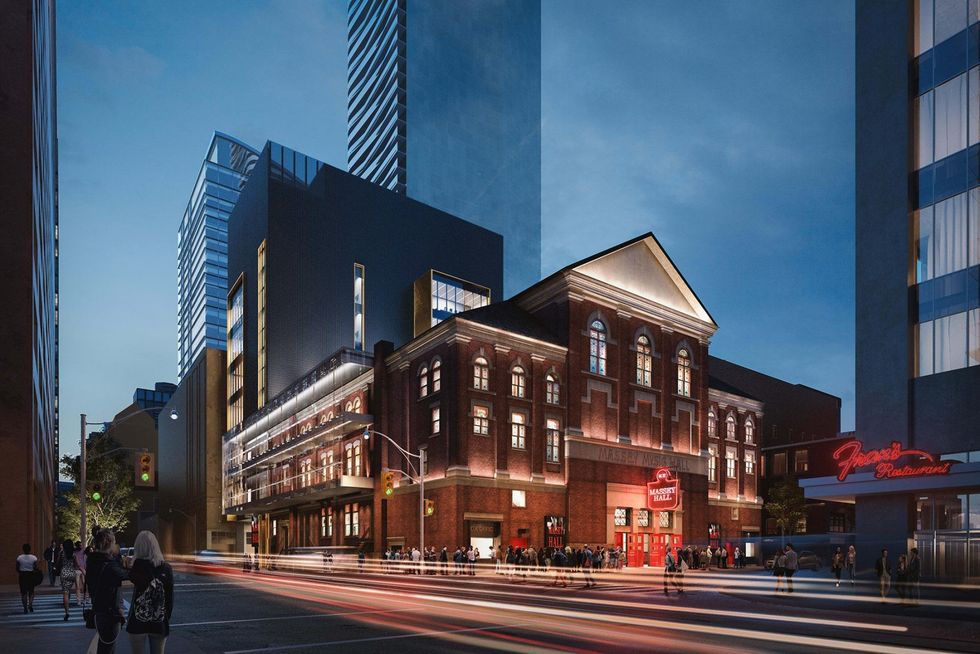
The architectural renderings created by KPMB Architects the team behind the Massey Hall Revitalization project show the restoration of the 100 original stained-glass windows.
Remarkably, those windows have been boarded up and concealed from view for over a century.
Over the years, Massey Hall became Toronto's pre-emanate concert venue, with some of the 20th century's most famous people appearing on its stage including:
Winston Churchill, George Gershwin, Glenn Gould, Maria Callas, Vladimir Horowitz, Dalai Lama, Luciano Pavarotti, Bob Dylan, Ravi Shankar, Maureen Forrester, Cream, Neil Young, Oscar Peterson, and of course Gordon Lightfoot.
